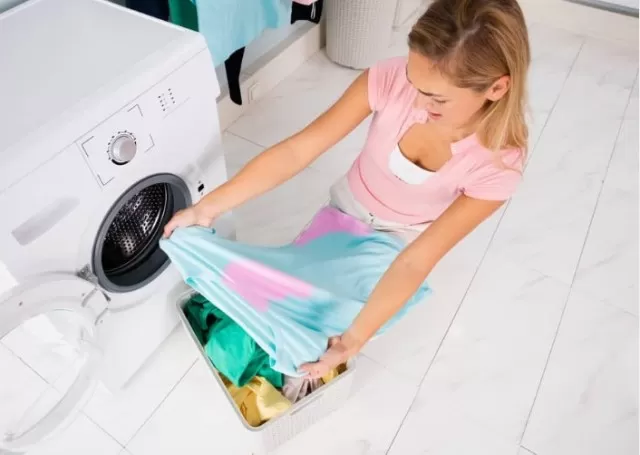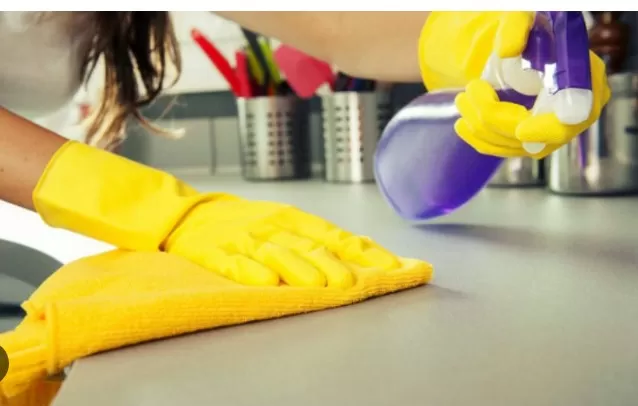8 Cleaning Hacks: Busted Myths and Ineffective Methods. Are you tired of struggling with cleaning and hoping for miraculous solutions to your messy problems? It’s natural to seek easier ways to keep our spaces clean, and the internet is filled with countless cleaning hacks and tips.
While some of these hacks may seem promising, it’s important to separate fact from fiction.
In reality, not all cleaning hacks are effective, and some can even be counterproductive or unsafe. It’s time to debunk eight commonly touted cleaning hacks that don’t actually work and could end up wasting your time and money. By avoiding these myths, you can focus on following reliable advice that will truly give you a cleaner and safer outcome.
Debunked: The Myth of Sanitizing Sponges in the Microwave

Sanitizing sponges in the microwave may sound like a viable cleaning hack, backed by a hint of science.
It is true that high heat can eliminate certain bacteria. However, recent research reveals a concerning drawback: the remaining bacteria in the sponge tend to recolonize and potentially become even more resilient.
But here’s the critical warning: attempting to reach the necessary temperature to kill all the bacteria within a sponge can lead to disastrous consequences.
The extended exposure to heat in the microwave can cause the sponge to catch fire and be completely incinerated. Moreover, studies indicate that microwaving sponges still retain approximately 40% of their bacteria, including some that can pose life-threatening risks.
A safer alternative is to opt for disposable wipes, cotton cloths, or microfiber cloths that can be conveniently washed after each use.
By choosing these options, you can maintain a cleaner and safer environment without relying on ineffective and potentially hazardous cleaning methods.
Debunked: Adding Salt to Prevent Dye Bleeding in the Washer

The idea of adding salt to the washer to prevent dye bleeding in clothes is a common myth.
However, it’s important to note that once clothes are already manufactured and available for purchase, it is too late to stop the dye bleeding process. Dye bleeding is a result of how the fabric is dyed during the manufacturing stage, and it cannot be altered by adding salt during the washing process.
If you find yourself in a situation where your clothes have experienced dye bleeding and, for example, all your underwear has turned pink, don’t worry.
There are alternative methods and hacks that can help address the issue.
Debunked: Using Hairspray to Remove Ink Stains

Using hairspray to remove ink stains is an old household hack that has been around for a long time.
However, it’s important to note that the effectiveness of this method has diminished over time. Modern hairsprays typically contain less alcohol, which is the component that helps dissolve the ink.
If you’re dealing with an ink stain, it is recommended to skip the hairspray and opt for isopropyl alcohol instead.
Isopropyl alcohol, commonly known as Rubbing Alcohol, has a higher alcohol content and is more effective in breaking down ink stains. Simply dampen a cloth or cotton ball with isopropyl alcohol and gently dab the ink stain until it starts to lift.
Remember to always test any cleaning method on a small, inconspicuous area of the fabric first to ensure it doesn’t cause any damage or discoloration.
Debunked: Placing a Magic Eraser in the Toilet Tank

The idea of placing a Magic Eraser in the toilet tank to remove stains is a common cleaning hack that has circulated online.
However, this method is not effective and may potentially cause damage to your toilet’s flushing mechanisms.
Magic Erasers are designed to be used with elbow grease and manual scrubbing.
They rely on the abrasive properties of melamine foam to remove stains and dirt from surfaces. When placed in the toilet tank, the Magic Eraser does not have the necessary contact with the stains to effectively clean them.
Furthermore, placing foreign objects in the toilet tank can interfere with the proper functioning of the flushing mechanisms and potentially cause problems with the toilet’s water flow.
To clean toilet stains effectively, it is recommended to use appropriate toilet cleaning products or natural cleaning solutions specifically designed for that purpose.
Follow the instructions on the cleaning product and use a toilet brush to scrub the stains away.
Debunked: Coating a Cooktop with Car Wax for Easy Cleaning
The idea of using car wax to coat a cooktop for easy cleaning has circulated as a cleaning hack.
However, this method is not recommended and may lead to undesirable outcomes.
Car wax is specifically designed for automotive surfaces, not cooktops.
It contains chemicals and ingredients that are not suitable for cooking appliances. Applying car wax to a cooktop can result in a buildup of residue, discoloration, and potentially create a fire hazard when exposed to high heat.
To clean a cooktop effectively, it is best to use cooktop-specific cleaning products or natural cleaners recommended for the type of cooktop surface you have.
Follow the manufacturer’s instructions and use gentle scrubbing tools, such as non-abrasive sponges or microfiber cloths, to remove grease and food spatter.
Debunked: Hot Water Kills All Germs
While hot water can help in killing some bacteria, it is important to note that it does not effectively kill all types of germs.
The temperature required to kill most bacteria is around 212 degrees Fahrenheit (100 degrees Celsius), which is the boiling point of water. Most home hot water heaters are set to lower temperatures, typically around 120 degrees Fahrenheit (49 degrees Celsius).
Additionally, even at higher temperatures, hot water alone may not be sufficient to eliminate all types of germs, including viruses and certain resilient bacteria.
To ensure proper disinfection, it is recommended to use a disinfectant product that is specifically designed to kill a wide range of germs. Common disinfectants include chlorine bleach, pine oil, and phenolic solutions like Lysol.
When dealing with situations like flu outbreaks or handling raw meats in the kitchen, it is crucial to incorporate appropriate disinfection practices to effectively reduce the risk of spreading harmful germs.
This includes using the correct disinfectant products and following the instructions provided by the manufacturer for proper disinfection protocols.
Debunked: Coca Cola Is the Best Toilet Cleaner
While it is true that carbonated sodas like Coca Cola contain small amounts of citric and phosphoric acids, which can help remove certain stains and rust, they are not the best choice for cleaning toilets.
While a carbonated soda may have some cleaning effects, it does not have the necessary disinfecting properties to effectively kill bacteria and other harmful microorganisms that can be found in toilets.
Using a disinfecting toilet cleaner specifically formulated for cleaning toilets is a much more effective and reliable option.
These cleaners are designed to not only remove stains and dirt but also to kill a wide range of bacteria and germs, ensuring proper sanitation and hygiene.
Moreover, using carbonated sodas as a toilet cleaner can leave behind a Sticky Residue that may actually promote bacterial growth rather than prevent it.
Therefore, it is recommended to use dedicated toilet cleaners that are specifically designed for thorough cleaning and disinfection of toilets.
Debunked: Extra Detergent Will Produce Cleaner Laundry
Contrary to popular belief, adding extra detergent to your laundry does not necessarily result in cleaner clothes.
In fact, using more detergent than necessary can have negative effects on your laundry and cleaning results.
Excessive detergent can leave behind a residue on fabrics that is difficult to rinse out completely.
This residue can make your clothes feel stiff, look dull, and even cause skin irritations for those with sensitive skin. Additionally, the excess detergent can accumulate in your washing machine, leading to clogs and reduced performance over time.
To achieve optimal cleaning results, it is important to follow the recommended dosage instructions provided by the detergent manufacturer.
These instructions are typically based on extensive testing to determine the appropriate amount of detergent needed for effective cleaning. By using the correct amount, you can ensure thorough cleaning without the negative consequences of excessive detergent use.
Remember, more is not always better when it comes to laundry detergent.
Use the recommended amount, choose high-quality products, and follow the instructions for best results.
*The information is for reference only.